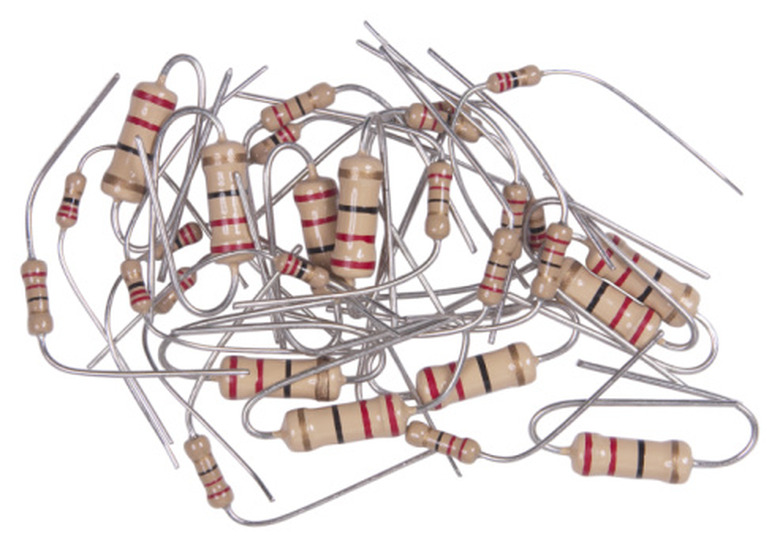How To Calculate The Inductance Of A Ferrite Inductor
Things Needed
- Calculator
- Inductance meter
Ferrite inductors have a ferrite core. Ferrite is a class of ceramic material with strong electromagnetic properties such as high permeability in combination with low electrical conductivity. Ferrite inductors are deployed in a variety of electric circuit applications such as broadband, power conversion and interference suppression.
Step 1
Make a simple ferrite inductor by wrapping at least 20 turns of wire around a ferrite rod. Using an inductance meter, measure the inductance of that rod. Record the inductance as "L" and the 20 turns as "N."
Step 2
Calculate the AL value of the ferrite inductor. The AL value is the base relationship between the inductance, with a given ferrite core, and the number of turns. Calculate the AL value using the following formula: AL = [(100/N)^2)] x L.
For example, if your measured value of L in Step 1 is 25 uH, the corresponding AL value will be: AL = [(100/20)^2] x 25uH =( 5^2) x 25uH = 25 x 25uh = 625 uH.
Step 3
Use your AL value to calculate the inductance for various values of N using the following formula: L = AL/[(100/N)^2].
For example: If N is 15, L = 625/[(100/15)^2] = 625/[6.66^2] = 625/44.4 = 14uH.
If N is 25, L = 625/[(100/25)^2] = 625/[4^2] = 625/16 = 39uH.
If N is 30, L = 625/[(100/30)^2] = 625/[3.33^2] = 625/11.1 = 56.3uH
As you can see, the inductance increases as N increases. This is because by placing more turns of wire around a loop, it concentrates the magnetic field into a smaller space, where it can be more effective and create more inductance.
References
Cite This Article
MLA
Chestnut, Dwight. "How To Calculate The Inductance Of A Ferrite Inductor" sciencing.com, https://www.sciencing.com/how-8293803-calculate-inductance-ferrite-inductor/. 7 August 2017.
APA
Chestnut, Dwight. (2017, August 7). How To Calculate The Inductance Of A Ferrite Inductor. sciencing.com. Retrieved from https://www.sciencing.com/how-8293803-calculate-inductance-ferrite-inductor/
Chicago
Chestnut, Dwight. How To Calculate The Inductance Of A Ferrite Inductor last modified March 24, 2022. https://www.sciencing.com/how-8293803-calculate-inductance-ferrite-inductor/
